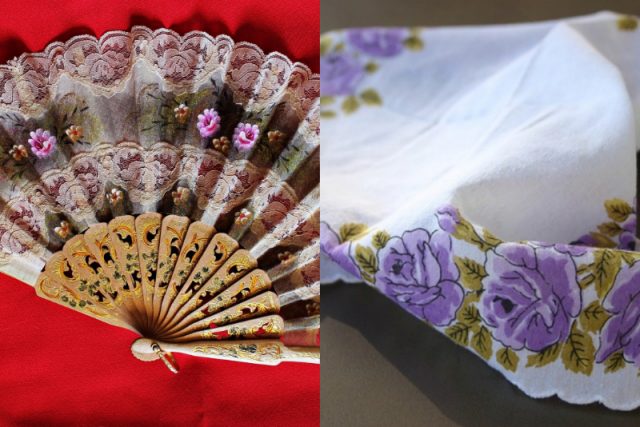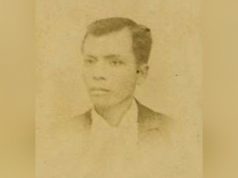
Fans and handkerchiefs are more than just fashion essentials in the 19th-century Philippines.
Public historian Ambeth Ocampo shared how some of these were used by women to send messages during courtship in the Spanish Colonial Era.
He posted excerpts from the appendix of Pascual H. Poblete‘s 1922 book “Patnubay ng Pagsinta: pantas na manga paraan at nang magtagumpay sa pag-ibig” which lists non-verbal cues involving fans and handkerchiefs.
The book’s title also translates to “Guide to Courtship,” according to Ocampo.
“Filipino Hanky Panky,” the historian said in a Facebook post on February 18.
“When you read Rizal’s novels or look at 19th-century images of Filipinas in their ternos, use this guide to decipher what they might be saying,” Ocampo added.
“Ternos” refer to the traditional Filipiniana women wore during the Spanish period.
Also called the “Maria Clara gown,” this attire consists of puffy butterfly sleeves, a plain blouse or a “camisa” or “baro,” a long skirt or “saya,” and a neck scarf or “pañuelo” worn over the shoulders.
Such attires are usually accessorized by delicate foldable fans. Other women also carry handkerchiefs with them.
During that period, women maximized their use by subtly letting these convey messages and emotions to their lovers and suitors amid the modest facade they had to maintain constantly.
Here are some of the messages associated with the fan and the handkerchief, based on the book:
Fans
- Dalhing nakabitin sa kanang kamay — Ibig kong magka-nobyo
- Dalhing nakabitin sa kaliwang kamay — Mayroon akong kasintahan
- Ipaypay na madalas — Malaki ang pag-ibig ko sa’yo
- Ipaypay na marahan — Walang halaga ka sa akin
- Itiklop na bigla — Kinapopootan kita
- Bayaang malaglag — Ako’y tapat na loob sa iyo
- Dalhin sa siping ng puso — Nagdadamdam akong malabis dahil sa iyo
- Takpan ang kalahating mukha — Sumunod ka sa akin
- Bilangin ang mga tadyang — Ibig kong magsalita sa iyo
- Paglaruan ang horlas — Umiibig ako sa iba at iniibig naman ako
- Huwag dalhin o ilagay sa bulsa — Ayaw kong makipagligawan
Handkerchief
- Ihaplos sa mga labi — Ibig kong makipagsulatan
- Ihaplos sa mga mata — Lubhang nalulungkot ako
- Ihaplos sa kaliwang kamay — Ikaw ay kinapopootan ko
- Ihaplos sa dalawang pisngi — Iniibig kita
- Bayaang malaglag — Tayo’y magkaibigan
- Ipatong sa kanang pisngi — Oo
- Ipatong sa kaliwang pisngi — Hindi
- Ihaplos sa balikat — Sumunod ka sa akin
- Ihaplos sa kanang tenga — Wala kang pagtatapat
- Ihaplos sa kaliwang tenga — Mayroon akong isang billete [banknote] para sa iyo
- Ihaplos sa dalawang mata — Lubha kang walang awa
- Tiklupin — Ibig kong makipag-usap sa iyo
- Tiklupin ang mga dulo — Hintayin mo ako
- Pilipitin ng dalawang kamay — Pagpapawalang halaga
- Pilipitin ng kanang kamay — May ibang iniibig ako
- Pilipitin ng kaliwang kamay — Magpasiyal kayo, ayaw kong makialam sa iyo
- Ibuhol sa hintuturo — Mayroong kasintahan ako
- Ibuhol sa susuotang singsing — Mayroong asawa ako
- Ibuhol sa buong kamay — Ako ay sa iyo
- Paglaruan ang panyo — Pinawalan kita ng halaga
Ocampo said the rare book is part of the University of Michigan Libraries’ Filipiniana collection.









